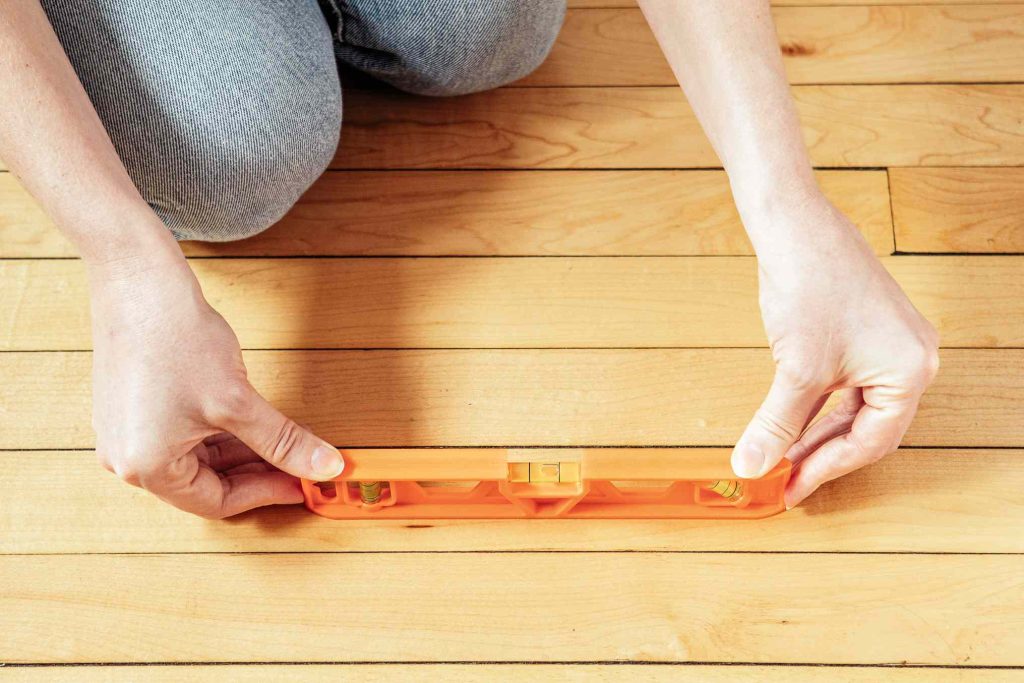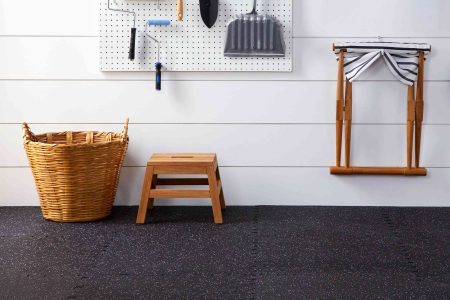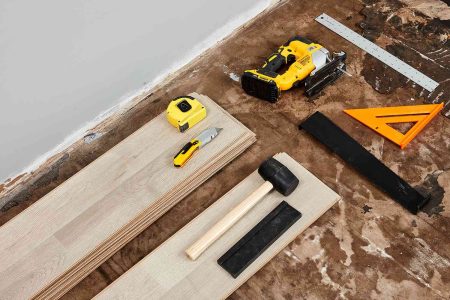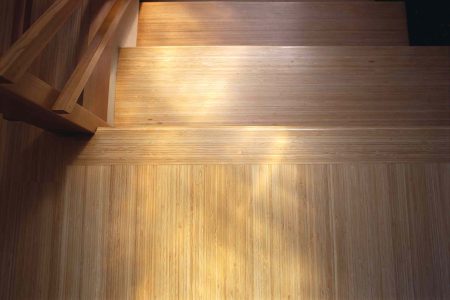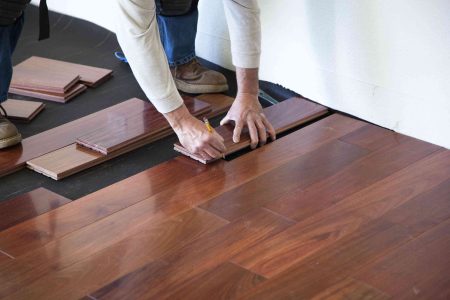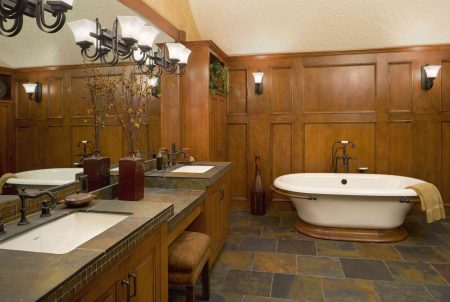Few aspects of a home elicit as much anxiety as a floor that is not level. Uneven floors can happen in any age home, especially old houses. Antique 100-year-old houses with uneven floors are especially common. When your floor slopes from one end to the other, or has dips and sags, it is a frustrating, vexing problem that is difficult to make right again. Before calling in a floor company or contractor to give you an estimate, determine which type of flooring problem you have and decide if you might be able to handle the problem yourself.
Slanting/Sloping Floors vs. Sagging Floors
Not all floor problems are the same. One category applies to floors that have a general, overall slant. The other applies to floors that might be generally level (from end to end) but might have sags or dips only in certain places.
Floors That Slant or Slope
A slant/slope situation might be one where, over the course of 15 to 20 horizontal feet, the floor slopes down 1 or 2 inches. Except for that slope, the floor itself might be flat. For rooms that have a general slope, the issue may be foundation problems that require the assistance of a foundation repair company or a general contractor.
Floors That Sag or Dip
Different from slanting/sloping floors are those that sag or have dips. For instance, you may have a dining room floor that is level end-to-end, but between those two points are various sags and dips. Your foundation may not be the problem. Instead, it may be an issue with joists and beams below your floor that require shoring up. In some cases, pouring floor leveling compound will fix the problem.
Safety Considerations
Floor leveling is a major project that can permanently alter your home. Be careful when taking on any of these projects by always having an assistant help you. Also, be sure to wear eye protection.
Get expert help for your next flooring project
You don’t have to go at it alone! Find and compare quotes from top-rated professionals near you.
Get a Quote
What You’ll Need
Equipment / Tools
- Laser level
- Electric miter saw
- Rotary level
- Framing hammer
- Tape measure
- Bubble level
- Carpenter’s pencil
- Adjustable steel columns
- Cordless drill
- Auger bits
- House jacks
Materials
- Self-leveling underlayment (floor leveling compound)
- 2-by-6s or 2-by-8s for sistering floor joists
- Bolts, nuts, and washers
Instructions
Fixing a Floor That Slopes or Slants
If the floor itself is flat, the foundation footer may have subsided or sunk. Alternatively, the sill (the wooden part of the house that rests on the foundation footer) may have deteriorated due to rot, water, termites, or carpenter ants. Both of these are identifiable problems and some companies specialize in foundation repair. However, if you are an advanced DIYer, you can attempt to tackle the project yourself.
-
Place New Footers
Jack up the portion of the house that is sinking and place new footers. Anything involving 20-ton house jacks will take time; you cannot jack up a house in one day. It has to be jacked up slowly over days or even weeks to avoid cracking drywall, plaster, windows, and even structural elements.
-
Remove the Jack
After some time has passed, take off the jack and re-level it or stabilize it.
Fixing a Floor That Sags and Dips
There are multiple ways to fix a floor that sags and dips.
-
Pour Self-Leveling Underlayment
Pour self-leveling underlayment in the problem area. The compound can correct sags and dips as deep as 1 1/2 inches.
-
Sister the Joists
If you have access to the basement or crawlspace, it is possible to jack up saggy joists until they are level and then sister them so that they remain straight after the jacks are removed. Sistering is the process of mating up two boards with bolts, nuts, and washers so that the new board corrects or supports the other, weaker one.
-
Prop Up the Joists
Place adjustable steel columns under the joists to keep them propped up. This steel column fix does require that the base of the column be secured to the basement floor and the top of the column be secured to the joist.
-
Lay Down New Hardwood
On the top side of the floor, another fix-it idea is to lay down new hardwood over the existing floor. A plywood subfloor will bridge any minor waves in the existing floor, and leveling compound would help, too. You will have to make sure your joists can handle the addition of considerably more weight from the plywood subfloor and any floor coverings. Below, you can sister the joists and add a few adjustable columns to strengthen the joists to handle the additional weight.
It can cost a lot to fix an uneven floor if it is due to a structural issue. Some homeowners, when confronted with staggering bills for floor repairs, come to terms with their home’s uneven floors. It’s normal for old houses to have uneven floors and even historic houses have saggy, sloping floors. Minor workarounds are possible, such as leveling the furniture that sits on the floor, placing shims in joists where there are dips that are not due to structural issues, or using a power planer to remove some higher spots and bumps in wood or concrete floors. Sometimes covering it up is the best solution. The best flooring for an old house with uneven floors might be a material with more flex to it, such as laminate, though it may still show the floor’s flaws.
When to Call a Professional
Few floor specialists deal only with this type of problem. The best route is to contact a general contractor. For foundation repairs, contact a foundation repair specialist.
-
Why are floors uneven or sloping in old houses?
Old houses have had a lot of time to settle, which means the earth beneath the home has slowly shifted causing the home to sink toward the ground and making the walls no longer plumb.
-
Do uneven floors mean there are foundation problems?
There are a couple of reasons why floors in a home are uneven, and a foundation problem is only one potential issue. Other issues can be structural members damaged by insects, moisture, or otherwise weakened support beams, posts, or fasteners.
-
How can I fix an uneven second floor?
The solution for fixing an uneven second floor usually involves jacking. An uneven second floor can often mean the second-story floor joists are not supportive enough.
Read the full article here



